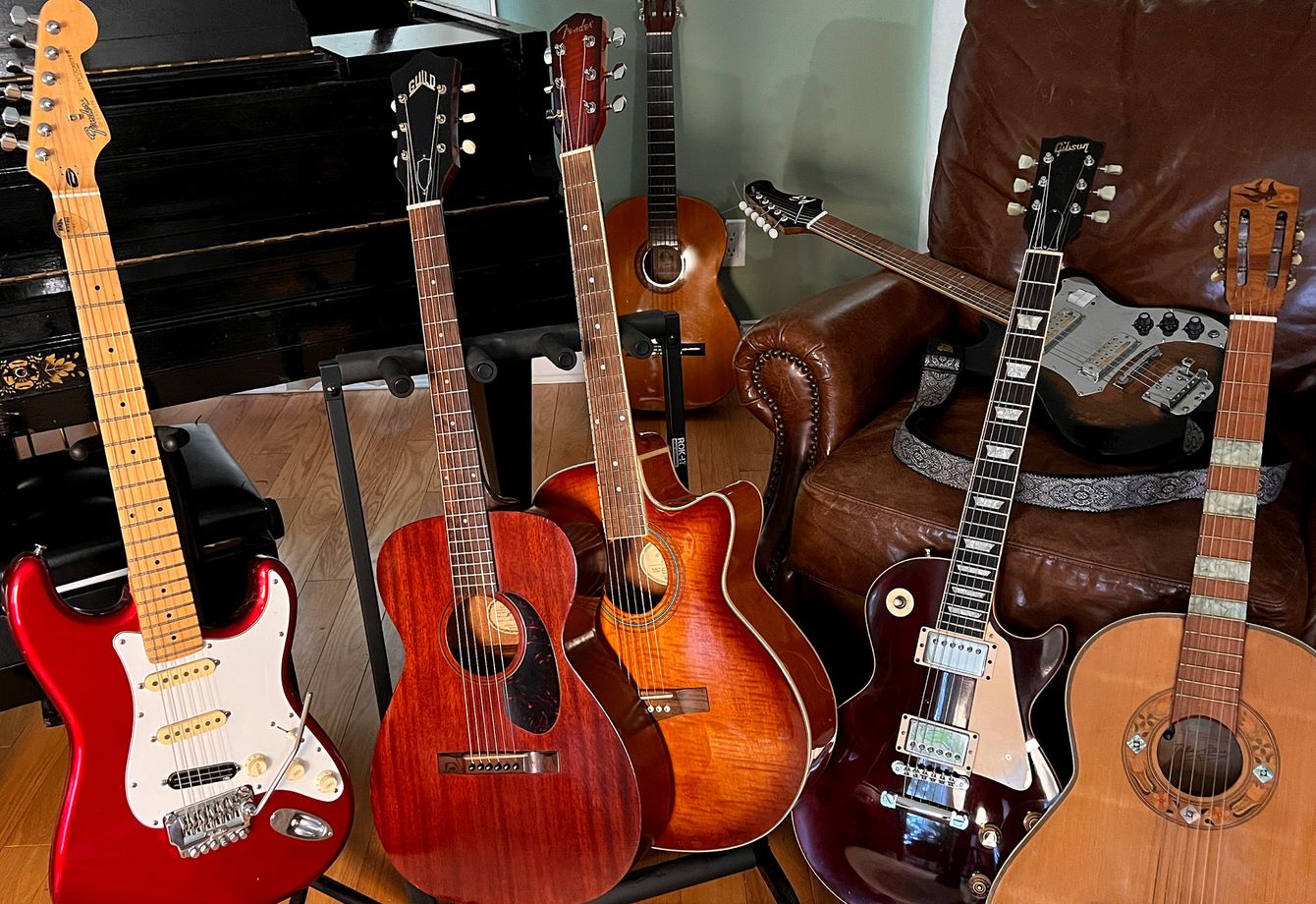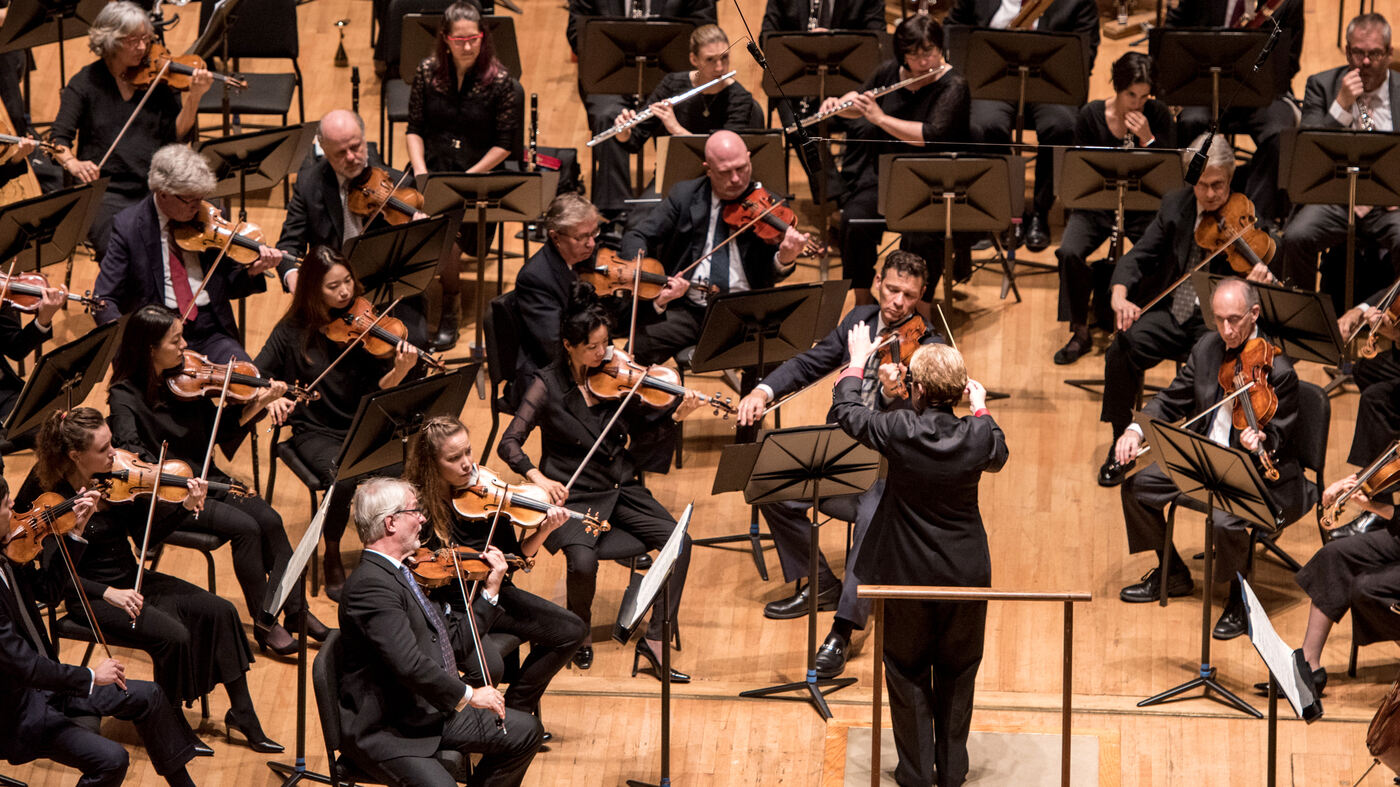Home>Production & Technology>Acoustic>What Is The Difference Between Acoustic And Classical Guitar


Acoustic
What Is The Difference Between Acoustic And Classical Guitar
Published: March 12, 2024
Discover the key distinctions between acoustic and classical guitars, including their unique sound, construction, and playing styles. Learn which one is right for you!
(Many of the links in this article redirect to a specific reviewed product. Your purchase of these products through affiliate links helps to generate commission for AudioLover.com, at no extra cost. Learn more)
Table of Contents
Introduction
When it comes to the world of guitars, the acoustic and classical guitar stand out as two distinct instruments, each with its own unique characteristics and allure. These instruments have carved their own niche in the music industry, captivating the hearts of musicians and audiences alike with their rich history and captivating sound. Understanding the differences between acoustic and classical guitars is essential for both aspiring musicians and seasoned players, as it can greatly influence the choice of instrument and playing style.
The acoustic guitar, often referred to as a steel-string guitar, is a versatile and popular choice among musicians. Its construction typically involves a hollow body with a sound hole, allowing the strings to resonate and produce a warm, vibrant tone. In contrast, the classical guitar, also known as the nylon-string guitar, boasts a smaller body and a wider neck, contributing to its distinct sound and playability. These fundamental differences in construction set the stage for a myriad of disparities between the two instruments, encompassing sound, playing technique, and musical repertoire.
As we delve deeper into the realm of acoustic and classical guitars, it becomes evident that their dissimilarities extend beyond mere physical attributes. The sound and tone produced by each instrument are profoundly influenced by their construction and string composition. Moreover, the playing style and technique employed by musicians vary significantly, reflecting the unique characteristics of each guitar. Whether it's the vibrant strumming of an acoustic guitar or the intricate fingerpicking of a classical guitar, the distinct playing styles contribute to the individuality and charm of these instruments.
In the following sections, we will embark on a captivating journey through the intricate differences between acoustic and classical guitars, exploring their construction, sound, playing style, string type, musical genre, and repertoire. By unraveling the nuances that set these instruments apart, we aim to provide a comprehensive understanding of their distinct attributes, empowering musicians to make informed choices and enriching their musical endeavors. Let's embark on this melodic expedition and unravel the captivating world of acoustic and classical guitars.
Construction and Design
The construction and design of acoustic and classical guitars lay the foundation for their distinct characteristics and playing experience. The acoustic guitar, often crafted with a larger, hollow body, is designed to amplify the sound produced by steel strings. This resonant chamber, typically made of wood such as spruce, mahogany, or cedar, contributes to the instrument's rich and vibrant tone. Additionally, the sound hole, located on the guitar's face, allows the sound to escape, further enhancing the instrument's acoustic projection.
In contrast, the classical guitar features a smaller, compact body with a wide, flat neck. The top of the classical guitar is commonly constructed from softwoods like cedar or spruce, which are known for their ability to produce warm, mellow tones. Unlike the acoustic guitar, the classical guitar utilizes nylon strings, which exert less tension on the instrument's neck and top, influencing its overall sound and playability.
The neck design also sets these guitars apart. Acoustic guitars typically have a narrower neck, facilitating easier access to complex chord shapes and lead playing. On the other hand, classical guitars boast a wider neck, allowing for precise fingerpicking and intricate chord formations. This distinction in neck width greatly influences the playing style and technique employed by musicians, shaping the unique sound and character of each instrument.
Furthermore, the choice of tonewoods and bracing patterns significantly impacts the tonal qualities of acoustic and classical guitars. Acoustic guitars often incorporate bracing patterns that enhance the projection and sustain of the instrument, while classical guitars utilize fan bracing to achieve a balanced and resonant sound. The combination of tonewoods and bracing patterns underscores the meticulous craftsmanship and attention to detail that define these instruments.
In essence, the construction and design of acoustic and classical guitars serve as a testament to the artistry and precision involved in their creation. From the choice of tonewoods to the intricacies of bracing patterns, each element contributes to the instrument's sonic identity and playing experience. By understanding the nuances of their construction and design, musicians can gain a deeper appreciation for the craftsmanship behind these timeless instruments, ultimately enriching their musical journey.
Sound and Tone
The sound and tone of a guitar are perhaps the most defining aspects of its identity, captivating listeners with their unique timbres and resonances. When comparing acoustic and classical guitars, the disparities in sound and tone are striking, stemming from their distinct construction, string composition, and playing techniques.
The acoustic guitar, characterized by its steel strings and hollow body, produces a bright, vibrant sound with pronounced highs and rich lows. The resonance of the steel strings against the guitar's wooden body creates a dynamic and lively tonal profile, making it well-suited for genres such as folk, pop, rock, and country. The tonal characteristics of an acoustic guitar are further influenced by the choice of tonewoods, bracing patterns, and body shape, resulting in a diverse range of sonic possibilities.
In contrast, the classical guitar, featuring nylon strings and a smaller body, exudes a warm, mellow tone with a pronounced emphasis on mid-range frequencies. The nylon strings, renowned for their smooth texture and reduced tension, contribute to the classical guitar's distinctive timbre, evoking a sense of intimacy and elegance. The tonal qualities of a classical guitar are intricately intertwined with its softwood top, bracing patterns, and overall construction, yielding a balanced and nuanced sound revered in classical, flamenco, and fingerstyle genres.
Beyond the string and body composition, the playing techniques employed on each guitar further shape their sound and tone. Acoustic guitarists often utilize strumming and flatpicking to elicit a percussive and resonant sound, accentuating the instrument's dynamic range and projection. In contrast, classical guitarists employ fingerstyle techniques, delicately plucking the nylon strings to produce intricate melodies and expressive phrasing, showcasing the instrument's capacity for nuanced articulation and emotive resonance.
The sound and tone of acoustic and classical guitars encapsulate a rich tapestry of sonic possibilities, each instrument offering a distinct palette for musical expression. Whether it's the vibrant, shimmering tones of an acoustic guitar or the warm, evocative timbres of a classical guitar, the unique sonic identities of these instruments continue to captivate musicians and audiences alike, transcending genres and generations.
In essence, the sound and tone of acoustic and classical guitars serve as a testament to the artistry and craftsmanship inherent in their design, resonating with the hearts and souls of musicians across the globe. As musicians embark on their melodic endeavors, the distinct sonic landscapes of these guitars beckon, inviting exploration, creativity, and boundless musical expression.
Playing Style and Technique
The playing style and technique employed on acoustic and classical guitars are pivotal in shaping the musical expression and character of each instrument. These guitars not only differ in their physical construction and tonal qualities but also demand distinct approaches to playing, reflecting the rich traditions and stylistic nuances associated with each instrument.
Acoustic guitarists often gravitate towards dynamic strumming and flatpicking techniques, harnessing the instrument's steel strings and resonant body to produce robust, percussive rhythms and vibrant chord progressions. The versatile nature of the acoustic guitar lends itself to a wide array of playing styles, from energetic strumming patterns in folk and rock music to intricate fingerstyle arrangements in blues and country genres. The rhythmic propulsion and expansive tonal range of the acoustic guitar empower musicians to explore diverse playing techniques, fostering a dynamic and engaging musical experience.
In contrast, classical guitarists embrace the art of fingerstyle playing, delicately plucking the nylon strings with precision and finesse to articulate intricate melodies and harmonies. The classical guitar's wider neck and softer string tension facilitate intricate fingerpicking patterns and complex chord voicings, allowing musicians to evoke nuanced expressions and emotive phrasing. The disciplined approach to fingerstyle technique in classical guitar playing underscores the instrument's capacity for intimate storytelling and evocative musicality, captivating listeners with its lyrical grace and expressive depth.
Furthermore, the playing styles associated with acoustic and classical guitars extend beyond conventional techniques, encompassing percussive tapping, harmonics, and alternate tunings that enrich the sonic possibilities of each instrument. Acoustic guitarists often incorporate percussive elements and rhythmic tapping to infuse their playing with dynamic textures and rhythmic vitality, while classical guitarists explore harmonic overtones and intricate tunings to expand the tonal palette and artistic scope of their performances.
The distinct playing styles and techniques embraced by acoustic and classical guitarists reflect the diverse musical traditions and genres that have flourished around these instruments. Whether it's the spirited strumming of an acoustic guitar or the intricate fingerpicking of a classical guitar, the playing style and technique serve as a testament to the rich heritage and expressive versatility of these timeless instruments.
In essence, the playing style and technique on acoustic and classical guitars embody the artistry and creativity of musicians, offering a canvas for boundless musical exploration and emotive storytelling. As musicians embark on their melodic journeys, the distinct playing styles of these guitars beckon, inviting them to immerse themselves in the captivating world of acoustic and classical guitar playing.
String Type and Tension
The string type and tension play a pivotal role in defining the sonic characteristics and playability of acoustic and classical guitars. These instruments are distinguished by their unique string compositions and the resulting tension exerted on the guitar's neck and body, influencing their tonal qualities and responsiveness to player input.
Acoustic guitars are renowned for their steel strings, which are crafted from various alloys to achieve distinct tonal profiles and playing experiences. The steel strings, characterized by their robustness and bright tonality, exert higher tension on the guitar's neck and top, contributing to the instrument's dynamic projection and responsive feel. The tautness of steel strings enables acoustic guitarists to execute vigorous strumming patterns and articulate clear, resonant notes, making the instrument well-suited for genres such as folk, rock, and blues. Moreover, the steel strings' resilience and sustain enrich the acoustic guitar's sonic palette, allowing musicians to explore a wide range of expressive techniques and musical styles.
In contrast, classical guitars feature nylon strings, renowned for their smooth texture and reduced tension compared to steel strings. The nylon strings, often wound with silver-plated copper, produce a warm, mellow tone with a pronounced emphasis on mid-range frequencies, evoking a sense of intimacy and elegance. The lower tension exerted by nylon strings on the guitar's neck and top enhances the instrument's playability, facilitating intricate fingerstyle techniques and delicate articulation. Classical guitarists harness the nylon strings' supple nature to craft intricate melodies and emotive phrasing, showcasing the instrument's capacity for nuanced expression and lyrical depth. The nylon strings' gentle touch and resonant warmth make the classical guitar an ideal choice for classical, flamenco, and fingerstyle genres, allowing musicians to convey profound emotions and storytelling through their performances.
The disparity in string type and tension between acoustic and classical guitars underscores the diverse sonic possibilities and playing experiences offered by these instruments. Whether it's the vibrant, shimmering tones of an acoustic guitar or the warm, evocative timbres of a classical guitar, the string type and tension serve as a cornerstone of their sonic identity, shaping the musical narratives and artistic expressions woven by musicians.
In essence, the string type and tension on acoustic and classical guitars embody the intricate interplay between craftsmanship and musicality, enriching the melodic tapestries and emotive journeys embarked upon by musicians. As players immerse themselves in the captivating world of guitar music, the distinct string compositions and tension of these instruments beckon, inviting them to explore the boundless sonic landscapes and expressive nuances that define acoustic and classical guitar playing.
Musical Genre and Repertoire
The musical genre and repertoire associated with acoustic and classical guitars encompass a rich tapestry of styles, traditions, and artistic expressions, reflecting the diverse cultural influences and historical legacies that have shaped these instruments. From folk and rock to classical and flamenco, each guitar boasts a distinct sonic identity and musical heritage, inspiring musicians to explore a myriad of genres and repertoire.
Acoustic guitars, renowned for their dynamic projection and vibrant tonal palette, have found a prominent place in genres such as folk, pop, rock, and country. The instrument's versatility lends itself to rhythmic strumming patterns, energetic chord progressions, and expressive lead playing, making it a staple in contemporary and traditional folk music. In the realm of pop and rock, acoustic guitars evoke emotive textures and melodic intricacies, serving as the driving force behind acoustic ballads, anthemic compositions, and unplugged performances. The instrument's resonant sound and percussive qualities have cemented its position as a beloved companion for singer-songwriters, enabling them to craft evocative narratives and heartfelt melodies.
On the other hand, classical guitars have carved a niche in the realms of classical music, flamenco, and fingerstyle genres, captivating audiences with their lyrical grace and expressive depth. The nylon-stringed instrument's warm, mellow tones and nuanced articulation make it an ideal vehicle for interpreting classical compositions, showcasing intricate phrasing, and conveying emotive narratives. In the flamenco tradition, classical guitars exude fiery passion and rhythmic vitality, infusing traditional flamenco forms with captivating flourishes and percussive accents. Moreover, the classical guitar's affinity for fingerstyle playing has given rise to a rich repertoire of fingerpicking arrangements, encompassing genres such as blues, jazz, and contemporary fingerstyle compositions, allowing musicians to explore intricate harmonies and melodic improvisations.
The musical genre and repertoire associated with acoustic and classical guitars not only reflect the instruments' sonic capabilities but also underscore their cultural significance and enduring appeal. Whether it's the spirited rhythms of an acoustic guitar in a folk ballad or the emotive melodies of a classical guitar in a classical concerto, the diverse genres and repertoire showcase the profound impact of these instruments on the musical landscape, transcending boundaries and resonating with audiences worldwide.
In essence, the musical genre and repertoire intertwined with acoustic and classical guitars embody the rich tapestry of human creativity and cultural expression, inviting musicians to embark on a melodic odyssey through diverse genres and musical traditions. As musicians immerse themselves in the captivating world of guitar music, the expansive repertoire and genre diversity of these instruments beckon, offering a boundless canvas for artistic exploration and emotive storytelling.
Conclusion
In conclusion, the distinctive characteristics and allure of acoustic and classical guitars have woven a rich tapestry of musical expression, cultural significance, and artistic exploration. From their construction and design to their sound and tone, playing style and technique, string type and tension, and musical genre and repertoire, these instruments stand as timeless pillars of creativity and inspiration in the world of music.
The acoustic guitar, with its steel strings and resonant body, embodies versatility and dynamism, serving as a beacon of expression in genres such as folk, pop, rock, and country. Its vibrant tonal palette and percussive qualities have made it a beloved companion for singer-songwriters and instrumentalists, empowering them to craft emotive narratives and captivating melodies. The classical guitar, adorned with nylon strings and a warm, mellow tone, has found its home in classical music, flamenco, and fingerstyle genres, captivating listeners with its lyrical grace and expressive depth. Its affinity for intricate fingerstyle playing and nuanced articulation has paved the way for a rich repertoire of classical compositions, flamenco forms, and contemporary fingerstyle arrangements, showcasing the instrument's capacity for emotive storytelling and cultural resonance.
As musicians embark on their melodic journeys, the distinct sonic landscapes and expressive nuances of acoustic and classical guitars beckon, inviting them to immerse themselves in a world of boundless musical exploration and emotive storytelling. Whether it's the spirited rhythms of an acoustic guitar in a folk ballad or the emotive melodies of a classical guitar in a classical concerto, these instruments continue to transcend boundaries and resonate with audiences worldwide, embodying the enduring legacy of human creativity and cultural expression.
In essence, the captivating world of acoustic and classical guitars serves as a testament to the profound impact of these instruments on the musical landscape, inviting musicians to embark on a melodic odyssey through diverse genres and musical traditions. The craftsmanship, artistry, and cultural significance embodied by these guitars continue to inspire and enrich the lives of musicians and audiences, fostering a deep appreciation for the timeless art of guitar playing and the boundless possibilities it holds.
As we reflect on the intricate differences and shared legacies of acoustic and classical guitars, we are reminded of the enduring power of music to unite, inspire, and transcend the boundaries of time and space. These instruments, with their unique sonic identities and cultural resonance, stand as timeless vessels of human creativity, inviting musicians to weave their stories, emotions, and aspirations into the fabric of melodic expression.











